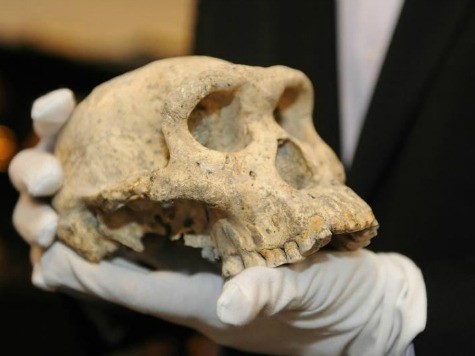A new discovery of an ancient skull from an ancestor of humans has scientists backtracking from their earlier claims that separate species in Africa were the progenitors of the human race.
The skull, found in the Georgian villiage of Dmanisi, is roughly two million years old and is the only intact human ancestor’s skull ever found that dates from the early Pleistocene Era. Dmanisi has yielded bones thought to be the remains of three males, one of them elderly, a young female, and a child whose sex is indeterminate.
Christoph Zollikofer, a professor at Zurich University’s Anthropological Institute, said, “Nobody has ever seen such a well-preserved skull from this period. This is the first complete skull of an adult early Homo. They simply did not exist before.” His awe was echoed by Tim White, from the University of California, Berkeley, who said, “The significance is difficult to overstate. It is stunning in its completeness. This is going to be one of the real classics in paleoanthropology.” The Dmanisi bones are believed to be remnants of Homo erectus, the first ancestor who resembled modern humans and originated in Africa.
Zollikofer continued, “Everything that lived at the time of the Dmanisi was probably just Homo erectus. We are not saying that palaeoanthropologists did things wrong in Africa, but they didn’t have the reference we have. Part of the community will like it, but for another part it will be shocking news.”
The leader of the Dmanisi excavations, David Lordkipanidze, said, “If you found the Dmanisi skulls at isolated sites in Africa, some people would give them different species names. But one population can have all this variation. We are using five or six names, but they could all be from one lineage.” Lordkipanidze theorized that the belief that Australopithecus sediba was a direct ancestor of humans was now probably wrong.
The consequences of the Dmanisi discovery could mean that species such as Homo rudolfensis, Homo gautengensis, Homo ergaster, and possibly Homo habilis would be dismissed.
White explained:
Some palaeontologists see minor differences in fossils and give them labels, and that has resulted in the family tree accumulating a lot of branches. The Dmanisi fossils give us a new yardstick, and when you apply that yardstick to the African fossils, a lot of that extra wood in the tree is dead wood. It’s arm-waving.
But Chris Stringer, head of human origins at the Natural History Museum in London, took issue with the idea that Homo Erectus was solely responsible for the ancestry of humans, saying:
I think they will be proved right that some of those early African fossils can reasonably join a variable Homo erectus species. But Africa is a huge continent with a deep record of the earliest stages of human evolution, and there certainly seems to have been species-level diversity there prior to two million years ago. So I still doubt that all of the ‘early Homo’ fossils can reasonably be lumped into an evolving Homo erectus lineage. We need similarly complete African fossils from two to 2.5m years ago to test that idea properly.
Lee Berger, at the University of Witwatersrand, who discovered the species Australopithecus sediba, took issue with the conclusion drawn by the Dmanisis team. He said:
This is a fantastic and important discovery, but I don’t think the evidence they have lives up to this broad claim they are making. They say this falsifies that Australopithecus sediba is the ancestor of Homo. The very simple response is, no it doesn’t. What all this screams out for is more and better specimens. We need skeletons, more complete material, so we can look at them from head to toe. Any time a scientist says ‘we’ve got this figured out’ they are probably wrong. It’s not the end of the story.

COMMENTS
Please let us know if you're having issues with commenting.